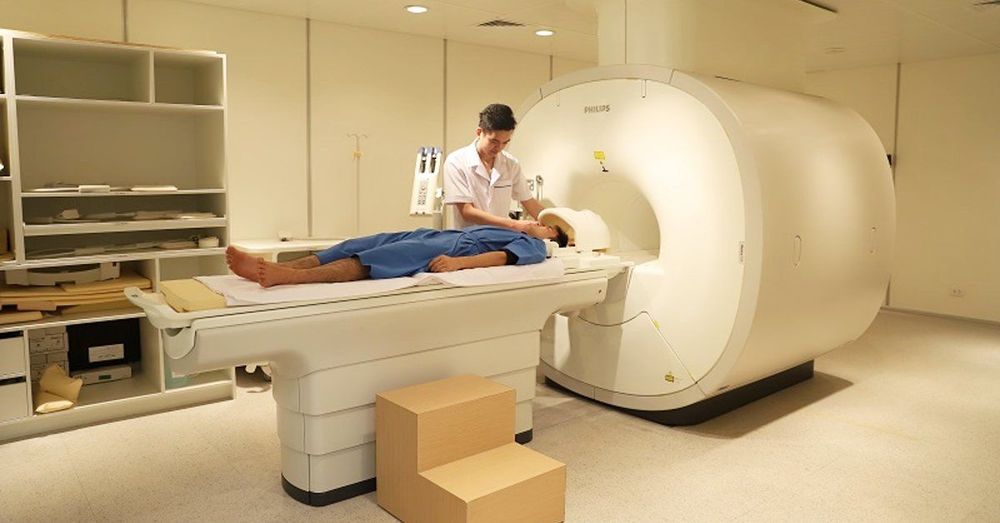This is an automatically translated article.
Posted by Master, Doctor Mai Vien Phuong - Department of Examination & Internal Medicine - Vinmec Central Park International General Hospital
Non-cardiac chest pain is a common disorder affecting the life and work of patients. However, despite its chronic nature, noncardiac chest pain did not affect patient mortality.
1. Definition of noncardiac chest pain
Noncardiac chest pain is defined as recurrent chest pain that is indistinguishable from ischemic heart attack after cardiac causes have been excluded.
Patients with noncardiac chest pain may have chest pain from squeezing, tightening, or burning, which may radiate to the back, neck, arms, and jaw and is indistinguishable from heart-related chest pain. This is combined with the fact that patients with a history of coronary artery disease (CAD) may also experience noncardiac chest pain. Therefore, all patients with noncardiac chest pain should first be evaluated by a cardiologist to rule out cardiac angina. Distinguishing only on clinical grounds between cardiac angina and noncardiac angina has proven to be a very difficult task. Furthermore, patients with noncardiac chest pain often have higher symptoms of chest pain and greater pain intensity.
The main underlying mechanisms include gastroesophageal reflux, esophageal dysfunction, and esophageal hypersensitivity. Gastroesophageal reflux disease is possibly the most common cause of noncardiac chest pain. Esophageal dysfunction affects only a small number of patients with noncardiac chest pain. Esophageal hypersensitivity may be present in patients with non-GERD-related chest pain regardless of esophageal dysfunction.
To the cardiologist, any two of the following clinical features suggest atypical cardiac angina, and only one or none of these features is indicative of noncardiac chest pain :
Chest discomfort, pressure or heaviness lasting several minutes, Pain caused by exertion, emotion, exposure to cold or a large meal and Pain relieved by rest or nitroglycerine is usually a sign signs of angina pectoris.
2. Diagnosis of noncardiac chest pain
When it comes to chest pain, the cardiologist's first priority is to rule out any life-threatening acute cardiovascular conditions, including:
Acute myocardial infarction Unstable angina Dissection aorta, pulmonary thrombosis Pericardial tamponade If an acute cardiac syndrome has been excluded, evaluation for chronic ischemic heart disease or pericardial disease should be considered. Various tests can help determine the presence and severity of ischemia, left ventricular function, coronary artery appearance, and functional ability, including:
SPECT ECG nuclei Drug echocardiography (dobutamine, persantine, or adenosine) cardiac MRI

3. Non-cardiac causes of chest pain
There are many causes of noncardiac chest pain, and they are not limited to the esophagus. Therefore, the term noncardiac chest pain is more inclusive and includes musculoskeletal, pulmonary, cardiovascular, infectious, drug-related, psychological, and other gastrointestinal disorders.
MORE: Non-cardiac chest pain caused by gastroesophageal reflux (Part 1)
4. Epidemiology of noncardiac chest pain
Information on the epidemiology of noncardiac chest pain in the United States and around the world is relatively limited. Currently, chest pain is the second most common presentation in hospital emergency departments; however, only 25% of people with chest pain actually go to the hospital.
The mean annual incidence of noncardiac chest pain in the 6 population-based studies was about 25%. However, these studies differed in many aspects such as definition of noncardiac chest pain, geography, sample size, sampling order, and ethnic disparity. A population-based survey in the United States evaluated the prevalence of GERD in Olmsted County, Minnesota and reported a prevalence of noncardiac chest pain of 23%. The gender distribution among patients with noncardiac chest pain was similar (24% in men and 22% in women).
Eslick et al recently assessed the prevalence of noncardiac chest pain in Australia using a post-tested angina questionnaire to 1,000 randomly selected people. The study demonstrated a prevalence of 33% with a roughly equal sex distribution (32% in males vs 33% in females). This study also shows that the prevalence of noncardiac chest pain in the population decreases with increasing age.
A nationwide population-based study from South America found that the annual prevalence of noncardiac chest pain was 23.5%, and noncardiac chest pain was reported equally in both sexes. In this study, frequent (at least once a week) typical GERD symptoms were significantly and independently associated with noncardiac chest pain. Another recently published epidemiological study demonstrated that the annual prevalence of noncardiac chest pain in the Chinese population was 19%.
4.1. Is there a difference in the incidence of non-cardiac chest pain between men and women?
Although women with noncardiac chest pain tend to consult clinicians more often than men, this disorder affects both sexes equally. In addition, women were more likely to present to hospital emergency departments with noncardiac chest pain than men, but there was no gender difference in chest pain intensity.
4.2. Which age group most often suffers from noncardiac chest pain?
Epidemiological studies report a decrease in the frequency of noncardiac chest pain with increasing age. Women under the age of 25 and those aged 45 to 55 have the highest incidence. Patients with noncardiac chest pain were younger, drank more alcohol and tobacco, and were more likely to have anxiety than patients with ischemic heart disease.
In one study, nearly 1 in 4 people with noncardiac chest pain had sought health care for chest pain within the previous 12 months. No gastrointestinal (heartburn, dysphagia, and acid reflux) or psychological (anxiety, depression, and neurological disorders) risk factors were significantly associated with the pursuit of counseling for noncardiac chest pain. .

4.3. What doctor should a patient with noncardiac chest pain see?
A recent survey in the United States revealed that cardiologists self-manage about half of patients diagnosed with noncardiac chest pain. Among patients with noncardiac chest pain who were referred, 45.9% were referred back to a primary care physician (PCP), and only 29.3% to a gastroenterologist. In a survey of primary care physicians, Wong et al demonstrated that most patients with noncardiac chest pain were diagnosed and treated by a primary care physician (79.5%) without Referral to a gastroenterologist. The most preferred sub-specialty for the initial diagnosis of patients presenting with chest pain was cardiovascular (62%), followed by gastroenterology (17%). The average rate of such referrals is only 22%.
A study by Eslick and Talley reported that 78% of patients presenting to a hospital emergency department with acute chest pain had visited their doctor in the past 12 months. The most common healthcare provider seen was a general practitioner (85%), followed by a cardiologist (74%), a gastroenterologist (30%), a pulmonologist (14%), alternative therapists (8%) and psychologists (10%).
5. Cost of non-cardiac chest pain treatment
Many patients with noncardiac chest pain report poor quality of life and admit to taking heart medications despite the lack of evidence for an aetiology. Only a small percentage of patients feel secure. Therefore, the economic burden of this disease has been suggested to be very high, although studies evaluating the cost impact of noncardiac chest pain on the health care system are scarce. In one study, healthcare costs for noncardiac chest pain were estimated at more than $315 million annually, mainly due to multiple clinic visits, emergency rooms, hospitalizations, and prescriptions. . This cost estimate does not include indirect costs such as lost business days or the impact of symptoms on the patient's quality of life
6. Conclusion
Our understanding of the epidemiology and natural course of noncardiac chest pain is still relatively limited. Overall, the disease appears to be very common, without any sexual orientation, and has a good prognosis. More has been learned over the years that GERD, esophageal dysfunction, esophageal hypersensitivity, and psychological comorbidities are important underlying mechanisms of noncardiac chest pain. In patients with functional chest pain, the exact pathogenesis and initial event or events leading to lifelong chronic chest pain are still poorly understood.
Vinmec International General Hospital with a system of modern facilities, medical equipment and a team of experts and doctors with many years of experience in medical examination and treatment, patients can rest assured to visit. examination and treatment at the Hospital.
Please dial HOTLINE for more information or register for an appointment HERE. Download MyVinmec app to make appointments faster and to manage your bookings easily.
References:
Ronnie Fass and Sami R Achem, Noncardiac Chest Pain: Epidemiology, Natural Course and Pathogenesis, J Neurogastroenterol Motil. 2011 Apr; 17(2): 110–123.














